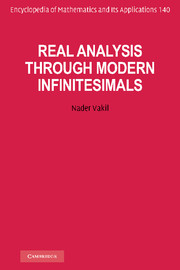Book contents
Introduction
Published online by Cambridge University Press: 05 January 2013
Summary
The mathematicians of the seventeenth and eighteenth centuries used a method based on the notion of an infinitesimal (an infinitely small number) to create and develop calculus and mathematical analysis. Although their method was intuitively appealing and enabled simple arguments and calculations, by the end of the nineteenth century it had to be abandoned for lack of rigor.
A rigorous development of classical analysis requires a precise definition of the real numbers, and for this the notion of an infinite set is essential. In this introduction, we provide some background for these foundational matters of mathematical analysis.
Infinite sets and the continuum
Among the most rudimentary operations of the human mind are the acts of considering a number of entities as a unit and of regarding a single object as composed of a number of constituents. For example, when we use words such as population or nation we are regarding a number of entities as a unit. Similarly, when we regard a drop of water as made up of a number of molecules of water or a line segment as an assemblage of infinitely many points, we are thinking of a single object as composed of a number of constituents. The intuitive notion of a collection of elements occurs to us in conjunction with these basic mental activities.
Information
- Type
- Chapter
- Information
- Real Analysis through Modern Infinitesimals , pp. 1 - 14Publisher: Cambridge University PressPrint publication year: 2011
